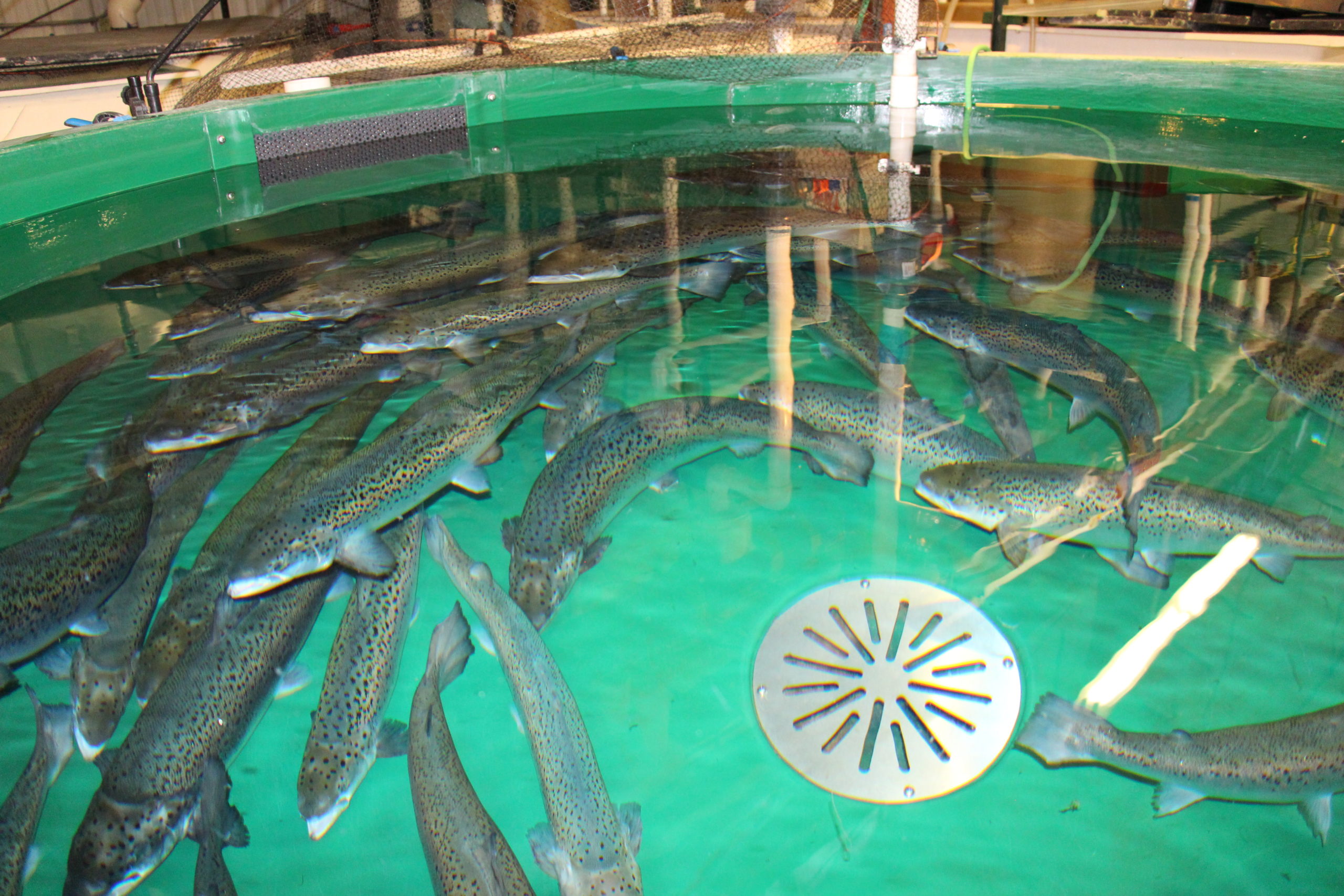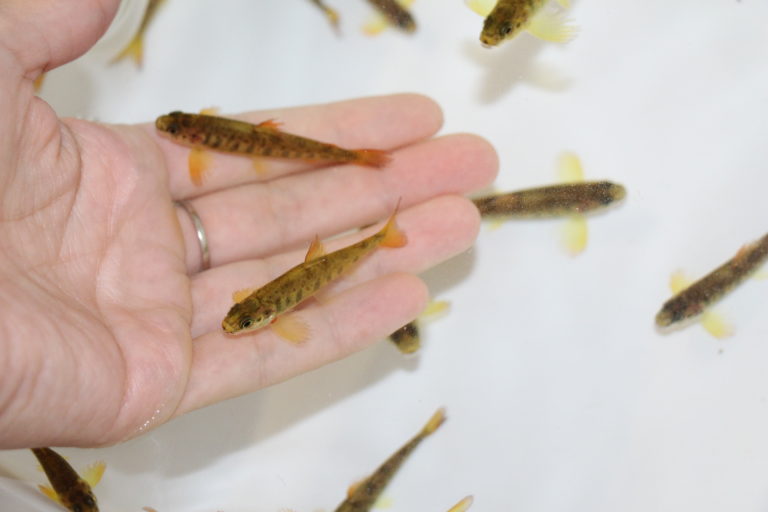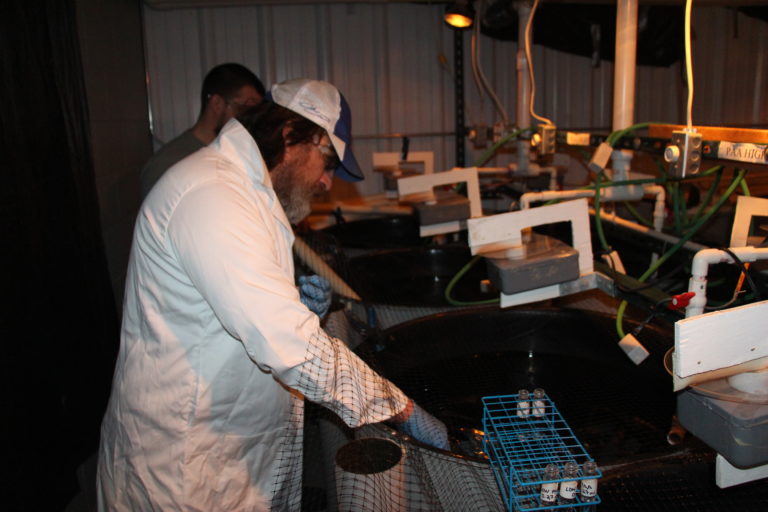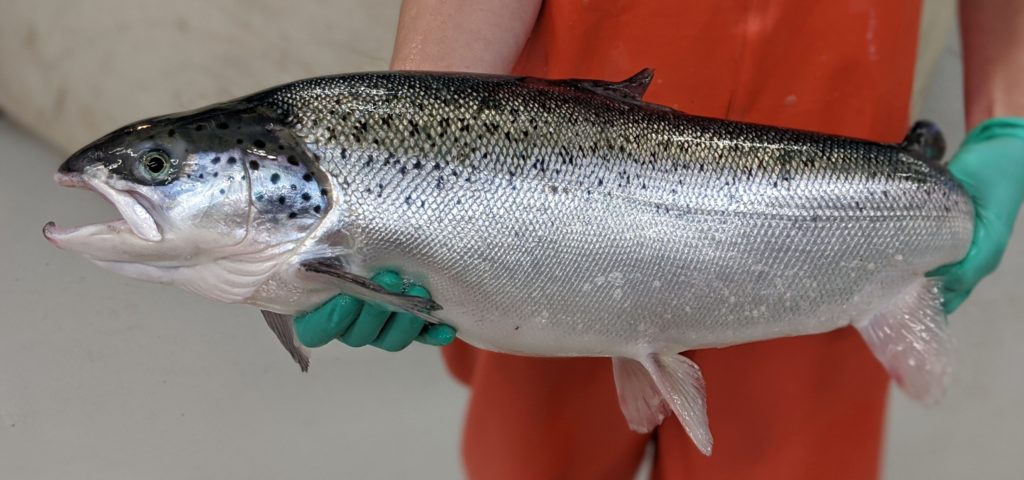Submitted by Greg Fischer1, Emma Wiermaa1 Chris Good2, John Davidson2, and Steve Summerfelt3
1The University of Wisconsin-Stevens Point Northern Aquaculture Demonstration Facility, 2The Conservation Fund Freshwater Institute, and 3 Superior Fresh
Based on current knowledge, there are several major technical-biological challenges that are encountered when producing market-size Atlantic salmon in land-based closed containment systems. Two challenges identified by industry include managing saprolegniasis (commonly termed “fungus”) during the parr (fry) and smoltification life stages and ensuring that the flavor profile of the market-sized harvested fish is free of off-flavor.



Overcoming the Barriers
Saprolegniasis
Effective therapeutic strategies must be developed not only to reduce losses to saprolegniasis, but also to maintain adequate water quality for fish health and performance, i.e. to not impact RAS biofiltration capacity. The development of such therapeutic approaches would be highly beneficial to industry, both for RAS smolt production and land-based closed containment grow-out facilities and will ultimately enhance the economic viability of RAS operations. This project found that survival during peak vulnerability to saprolegniasis (i.e., the fry life-stage) was significantly improved with the use of daily low-dose application of hydrogen peroxide while maintaining acceptable fish welfare.
Off-Flavor Elimination
This project investigated ways to optimize depuration procedures and possibly shorten the depuration period, saving substantial time, water and energy in commercial farms. Specific variables including water exchange rate, salmon swimming speed, and dissolved oxygen level were assessed to understand their effect on off-flavor remediation. Results from these trials provided important knowledge that should be used in the adoption of standard operating procedures for Atlantic salmon depuration. In particular, this research found that water flushing rate has a significant effect on the rate of off-flavor elimination from market-size Atlantic salmon. Based on these findings, land-based salmon producers can now establish finite hydraulic retention times in depuration systems that effectively remediate off-flavor. Ultimately, optimized purging procedures resulting from this work help to ensure that salmon harvested from RAS have a great flavor profile without earthy or musty flavors, which will facilitate increased consumer demand for land-based salmon products.

The Outcomes
The overarching goal of this project was to provide scientifically validated research that will allow salmon RAS farmers to refine and/or adopt standard operating procedures to combat saprolegniasis and enhance depuration techniques. This research helped to overcome these two potential bottle-necks to enhance the quality and efficiency of producing Atlantic salmon using RAS technologies.
Various deliverables have been produced for education and technology transfer of this research:
• Davidson, J., Summerfelt, S., Grimm, C., Fischer, G., and C. Good. Effects of swimming speed and dissolved oxygen on geosmin depuration from market-size Atlantic salmon Salmo salar. Aquacultural Engineering. 2021, 102201, ISSN 0144-8609, https://doi.org/10.1016/j.aquaeng.2021.102201
• University of Wisconsin-Stevens Point Northern Aquaculture Demonstration Facility. (2021, July 28). Land-Based Atlantic Salmon Production- Overcoming Barriers to Support Growth [Video]. YouTube. https://www.youtube.com/watch?v=vwYttxoHFKw&t=51s
• DiCocco, A., May T, Crouse C, Marancik, D., Phuntumart, V., Ghosh, S., Udayangika, G., Natalie, B., Megan Murray, R., Fischer, G., Summerfelt, S., and C. Good. Reducing mortality associated with opportunistic infections in Atlantic salmon Salmo salar fry using hydrogen peroxide and peracetic acid. Aquaculture Research. 2021; 00:1–9. https://doi.org/10.1111/are.15155m
• Davidson, J., Grimm, C., Summerfelt, S., Fischer, G., and C. Good. Depuration system flushing rate affects geosmin removal from market-size Atlantic salmon Salmo salar. Aquacultural Engineering, Volume 90, 2020, 102104, ISSN 0144-8609, https://doi.org/10.1016/j.aquaeng.2020.102104
• Fischer, G., Wiermaa, E., Good, C., Davidson, J., and S. Summerfelt. Overcoming Barriers to Support the Growth of Land-Based Atlantic Salmon Production. Aquaculture Magazine. June/July 2020. 70-75. https://www.uwsp.edu/cols-ap/nadf/Documents/Articles/SALMONIDS-AQM_46-3.pdf
For more information or to find future deliverables, please see:
aquaculture.uwsp.edu>Projects>Overcoming Barriers to Land-Based Atlantic Salmon